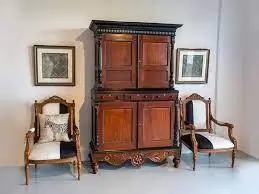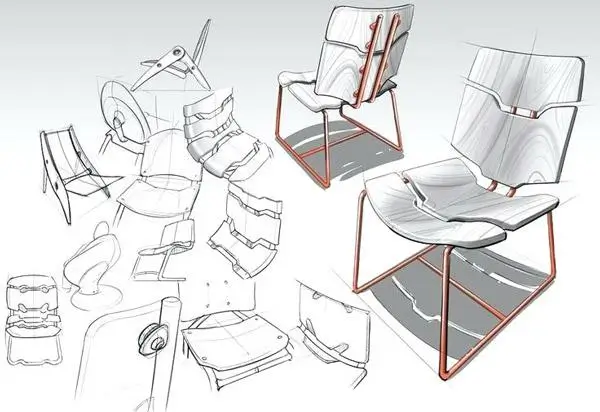Furniture Visualization vs. Photography: Which Should You Use?
If you’re into the furniture business, whether as a retailer, online store, marketing manager or product designer, the biggest challenge is to showcase products in a way that drive sales. Questions lie: “How do I truly capture the essence of a sofa, the texture of a dining table or the intricate details of a bed frame in a way that convinces customers to click "buy"?, can be real head-scratchers. For most furniture businesses, traditional product photography is the default answer. However, there is a powerful new contender: 3D visualization, also known as 3D rendering or CGI furniture.
While we say that there is a new way to showcase your furniture, the point is not to drop the other. No matter what method you choose, just ensure that it serves your purpose and gets you the benefits you are looking for. What we want is to make help you figure out which one will suit your business, by taking you through the benefits and limitations of traditional photography and furniture visualization.
Traditional Furniture Photography

In traditional furniture photography, we capture the physical products with cameras, either in a studio or a styled environment. Most businesses are familiar with traditional product photography, which offers a direct representation of the item.
-
Authenticity and Tangibility
The main appeal of traditional furniture photography is the authenticity. In the traditional method, you’re capturing the real look and feel of the furniture, benefiting from actual lighting (be it natural or artificial) and genuine textures. Because they are pictures of the actual object, it instills a sense of trust, convincing the customers that "what you see is what you get."
However, it’s terribly challenging to achieve consistency across various products, as the settings can be difficult due to changing lighting conditions, and studio setups, not to mention the sheer logistics of moving large furniture pieces.
-
Trust and Credibility
Customers are generally ready to trust real product photos. There's an inherent credibility in seeing the actual product, even if it isn’t in person.
However, the customer will be disappointed and lose trust if the physical product is different. According to a study, 90% of consumers on the internet say that photo quality is crucial when making an online purchase.
Any discrepancy between the real product and photo is usually caused by variations in lighting during the shoot, individual screen calibration, or subtle differences in manufacturing.
-
Simplicity for Existing Products
Traditional photography, generally speaking, is a straightforward process; provided you have the physical product and access to a suitable studio or location. Beyond the furniture and suitable location, you also need professional lighting equipment, props (for lifestyle shots), and experienced photographers and stylists.
To the detriment of traditional photography, the logistics can be nightmarishly complex and time-consuming for large or heavy items, products with multiple variations (e.g., different fabrics, colors, or finishes), or entirely new, unproduced designs that aren't yet physically manufactured.
-
Cost Considerations
At the start, traditional photography seems cheaper upfront. But this is true for only a small number of items. It can quickly become very expensive and time-consuming for large catalogs, especially if you need multiple angles, detailed close-ups, or extensive lifestyle shots.
The costs vary wildly for professional furniture photoshoots, but generally, unique shots, complexity and volume can dramatically increase the prices. For traditional furniture photography, you typically factor in studio rental, prop sourcing, model fees, and even the sheer time involved in setup and post-production for each shot.
Overall Limitations of Traditional Furniture Photography
- Traditional photography struggles with showcasing customizability. Imagine the chaos of trying to photograph every possible fabric and leg combination for a modular sofa!
- Then you also have the trouble of reshoots due to design changes or new trends, which consume a lot of money and time.
- To top it all off, there are logistical challenges (if you are to move to a specific location or move large pieces of furniture) or shoot prototype products that aren't yet ready for mass production.
Furniture 3D Visualization

3D rendering for furniture catalogs (or furniture 3D visualization) involves creating photorealistic images of furniture from scratch using specialized software. The images are completely CGI (computer-generated imagery), which means there is no need for the physical product or photoshoots. It’s much more flexible.
-
Unparalleled Flexibility and Scalability
One of the biggest advantages furniture visualization has over real photos is the unparalleled flexibility. You can create unlimited angles, lighting scenarios, and environments without any physical constraints (including physics)… the possibilities are endless.
Through CGI photography, it's incredibly easy to generate product variations – different colors, materials, or configurations – with just a few clicks.
The main con, however, is the requirement for skilled 3D artists and specialized software, all of which needs an upfront investment.
-
Cost-Effectiveness in the Long Run
Although there's a higher initial investment involved for software and talent for 3D rendering of furniture, the long-term savings are significant. For one thing, you eliminate costs related to logistics, studio rental, prop sourcing, and repeated reshoots. Add to that, you can reuse and repurpose the 3D furniture model to show different versions, so it’s easy to generate new images or variations relatively cheaply.
Costs for 3D furniture modeling usually are determined by the product complexity, turnaround time, type of background for the scene, type of 3D visual, etc.
In the long run (especially for large catalogs with many variations or frequent updates), 3D furniture visualization is generally more cost-effective than regular photography. Sounds too good to be true? Well, photography costs, on average, net out at $11,076 for a single five-furniture product shoot. For the exact same result with CGI furniture, the net works out to just $2,000.
-
Speed and Efficiency
CGI photography offers faster turnaround times for new product launches or design iterations. You can even develop products and their catalog imagery at the same time, speeding up your time to market.
However, don’t forget that it depends on the complexity of the model and revisions, as they can slow down the process initially.
-
Showcasing Customization and AR/VR Potential
Furniture visualization is the right fit for products with multiple options, like in the case of modular sofas, where there are various fabric choices. Interactive 3D configurators are an essential tool to add to virtual showrooms so customers can customize products in real-time.
In fact, eCommerce platforms that use 3D visualization see a 65% surge in engagement. Shopify merchants also found that using 3D commerce led to an average 94% increase in conversion rates.
But, whether you use configurators, augmented reality (AR) apps (where customers can virtually place the furniture in their own homes) or virtual reality (VR) experiences (like immersive showrooms), you need the foundation: 3D models.
By far, the only con here is that you need additional development for interactive features.
-
Consistency and Brand Control
If you go the 3D visualization route, it will be easier to maintain a consistent visual style, lighting, and environment across the whole catalog, strengthening your brand identity further. Each and every image can adhere to precise brand guidelines.
What is most attractive about CGI is that you can create hyper-realistic imagery, but it can be a challenging and time-consuming process.
How to Decide: Key Factors to Consider
The answer to picking furniture visualization vs photography (or a blend of the two) really depends on your specific business needs. Still, here’s a simple checklist you can use to help you decide:
-
Your Product Type
For simple products with a few variations, traditional photography will be sufficient. 3D visualization, meanwhile, is a more suitable choice for intricate or highly customizable items like modular sofas or furniture sets, as it’s more flexible when it comes to generating variations.
-
Budget and Timeline
For a short-term project with a limited budget and only a few products, photography is the better option. For long-term goals, large catalogs, projects with the potential for multiple updates and new product launches, it will be more economical to invest in 3D furniture rendering.
-
Desired Level of Interactivity and Future Growth
Traditional furniture photography is sufficient for a basic catalog, but if you want interactive experiences (like product configurators) or want to integrate AR/VR functionality, 3D visualization is the way to go.
-
Brand Image and Consistency
If your brand is all about the raw, "real-world" authenticity, traditional photography might align better. If your priority is sleekness, consistency in visuals, and innovation, 3D visualization will give you unparalleled control for this.
Essentially, CGI gives you flexibility and consistency and real photos offer a sense of authenticity, but with logistical constraints.
-
Your Team's Capabilities
Consider if you have the necessary in-house photography studio and talent or if you have access to skilled 3D artists (in-house) or specialized agencies for 3D rendering services. Of course, these days many furniture stores and manufacturers outsource both photography and 3D visualization services to a third party with the necessary skills, equipment and software to get the work done at a reasonable rate.
Hybrid Approach: Best of Both Worlds
Traditional photography and CGI furniture are certainly two ways to present your furniture, but the decision doesn't have to be an either/or scenario. For the best of both worlds, adopt a hybrid approach that combines the strengths of furniture visualization and photography.
-
Combining Strengths
Consider using traditional photography for hero shots, particularly for unique or highly tangible elements, because this is where the absolute authenticity of a real photograph really shines. You can supplement the real images with 3D renders for product variations, different angles, or lifestyle scenes that would be either too expensive or impossible to photograph (or both) in real life.
-
When it Makes Sense
The blended strategy makes sense for new product lines that are still in development, physical prototypes aren't available, there are extensive customization options or when you desire a consistently polished look across the entire catalog.
Let’s Wrap it Up
In the arena of e-commerce furniture imagery solutions, both furniture photography and 3D visualization have their distinct strengths. Photography, on the one hand, excels in perceived authenticity and trust for existing, tangible products. Furniture visualization, on the other, offers unmatched flexibility, scalability, and long-term cost-effectiveness.
In the end, what you choose as the "better" option will depend wholly on your specific business needs, product portfolio, and goals. There's no one-size-fits-all answer here, so weigh the pros and cons of both carefully and consider using a blended approach for optimal results.
If you are ready to discuss the best for your furniture catalog, hit us up for a consultation and we’ll help you craft the perfect visual strategy for your business!

